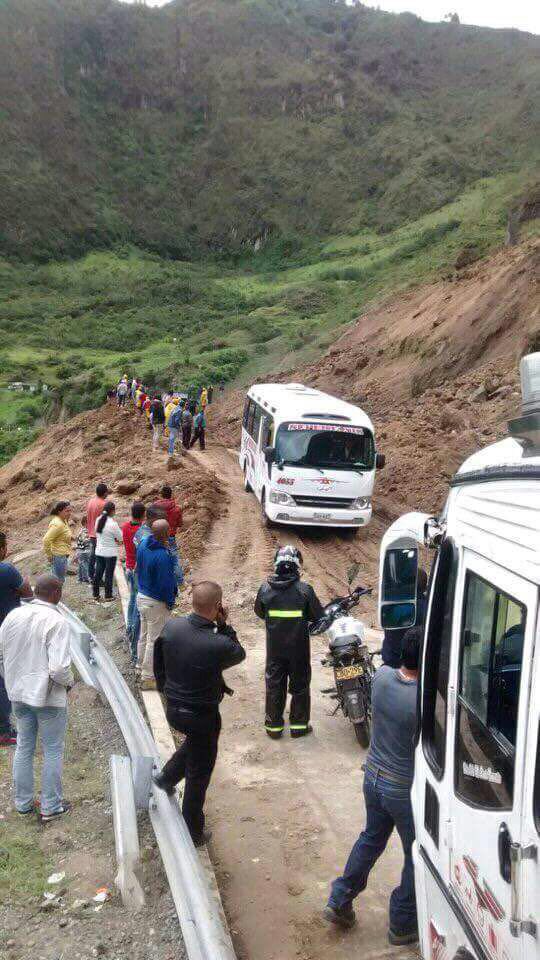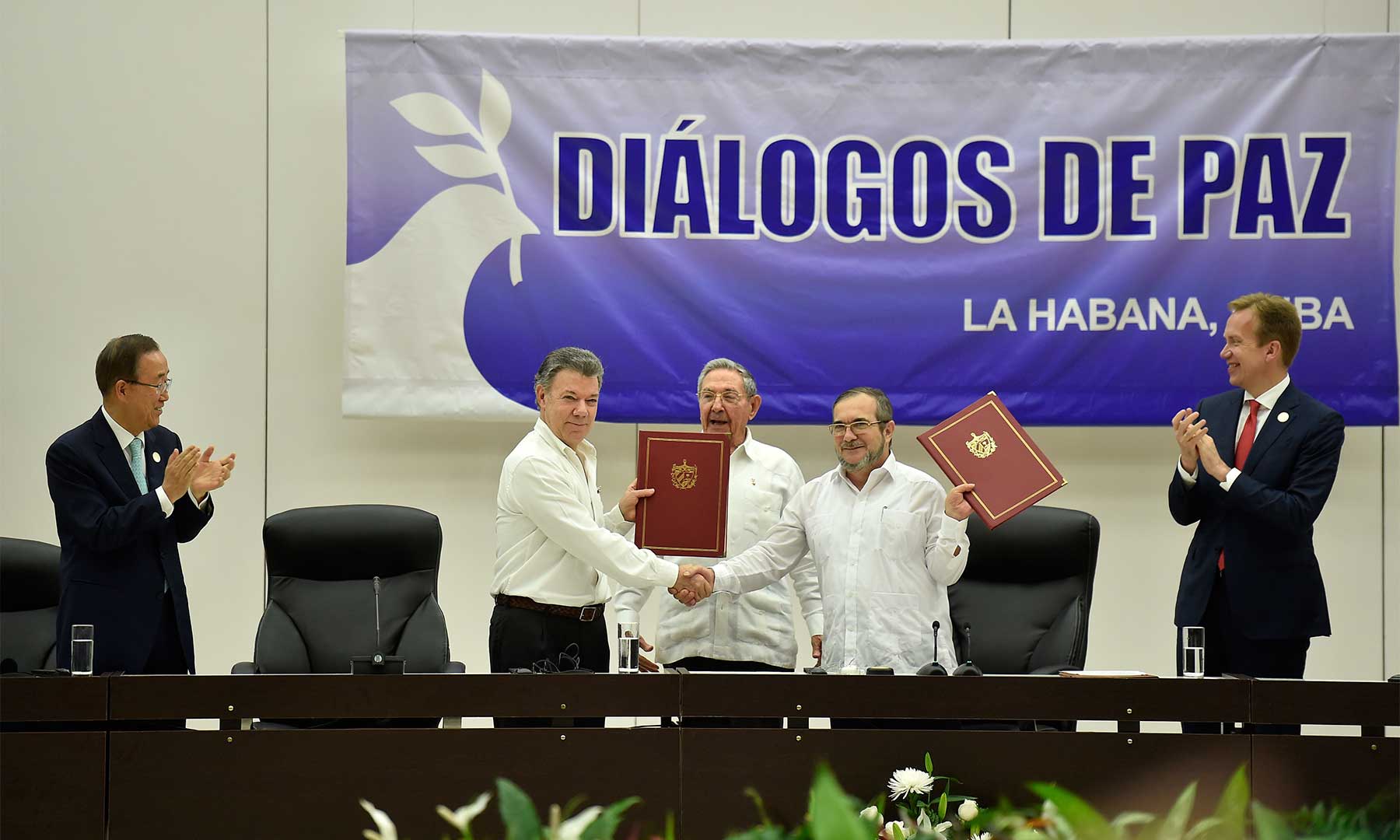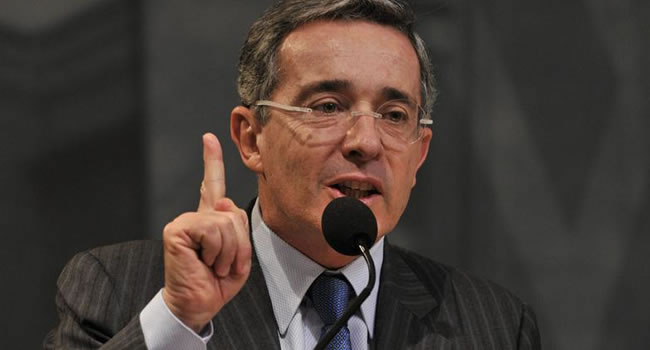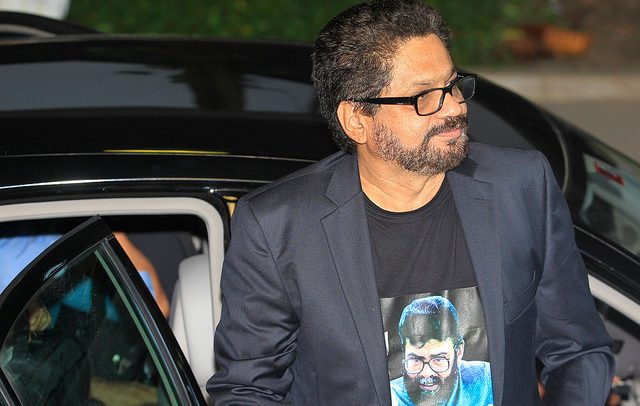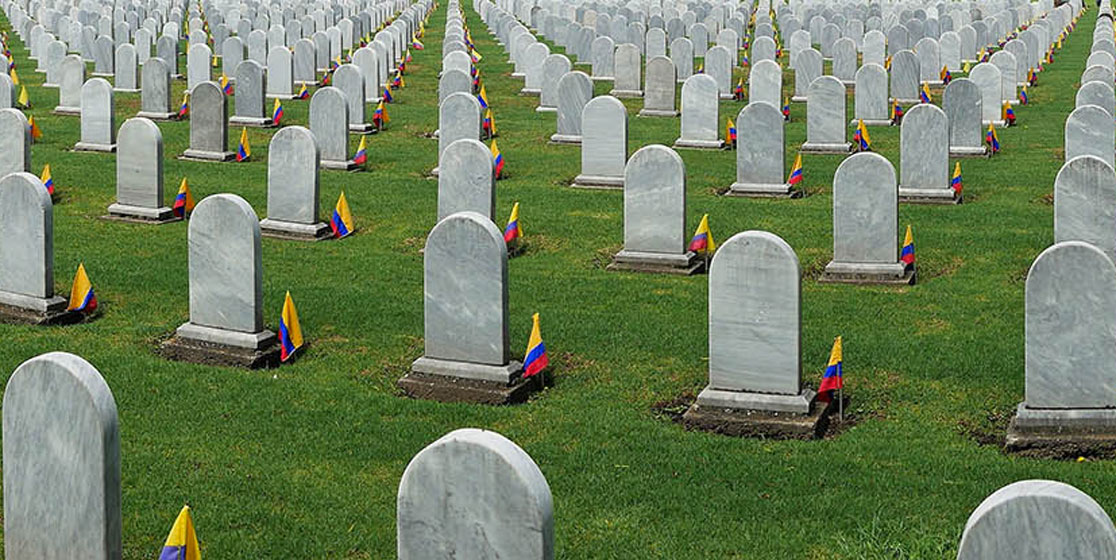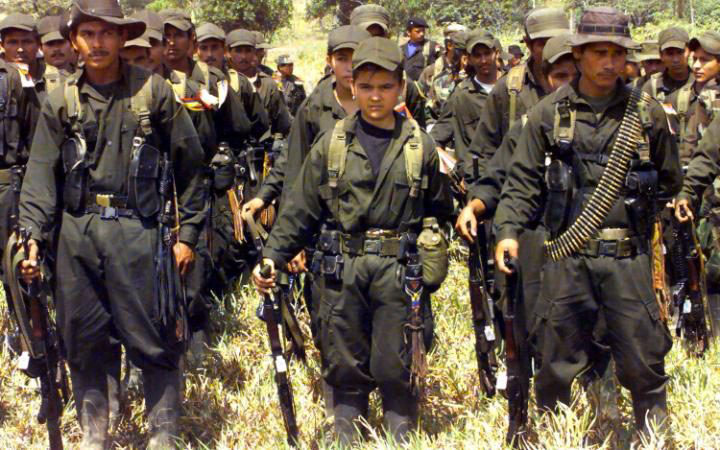
A boy soldier, centre, stands with other Farc militants in Los Pozos, 2000. Photo: Sipa Rex
Two people who were recruited to the guerilla group at an early age speak to Anne Bouleanu about their experiences.
When Lorena, 23, comes through the door of the Colombian Reintegration Agency (ACR), she is breathless from hurrying to avoid being late. She looks like any of the young, fashionable women of Bogotá. She carries a brown leather bag to match her jacket and a floral dress over light purple leggings. Lorena stops to hug Ricardo, 26, who sits at a table wearing a windbreaker, his Ray Ban sunglasses placed in front of him. They look no different to their peers – the only difference is that they are both former FARC child soldiers.
After defecting, both Lorena and Ricardo went through a programme with the ACR, a government organisation that has worked with 6,926 former FARC members to help them reintegrate into society.
When Colombia voted to reject the peace deal, it left Lorena and Ricardo uncertain of what will happen next. They were hoping for a ‘yes’ victory to end a conflict they both took part in and were victims of.
The main problem they face is the stigma of formerly belonging to the FARC. For example, it is currently legal to fire someone if an employer discovers they have worked with the guerillas. This has forced Lorena and Ricardo to keep their pasts a secret if they want to keep their jobs.
“What we need to work on is the capacity of understanding the violent past of the people who belonged to the FARC, and understand their intention to change,” says Joshua Mitrotti, the general director of the ACR. “Unfortunately, if you ask a man, ‘Would you let your daughter marry a demobilised person?’ they would immediately say ‘No.’”
The plebiscite result has once again put the question of what constitutes justice at the centre of discussion. But the debate over impunity barely touches a question that is key for Lorena and Ricardo: Can you hold people responsible for their crimes if they were children when they carried them out?
Lorena’s story
Lorena was just 10 years old when she was recruited by the FARC. She comes from a family of FARC supporters and members who live in San Vicente in rural Colombia, so joining the guerillas was somewhat of a family tradition. She enlisted with the FARC with her father’s encouragement and did everything from cooking to working as a guard at night, to eventually becoming a sniper.
When asked about the violence she saw and engaged in, Lorena’s eyes cast over as she looks down.
“It’s difficult,” she says.
Lorena was a member of the FARC for six years before making the decision to leave. She was sent to a more populated city than she had ever visited to carry out a recruitment mission. At 16 years old, Lorena saw people carrying cellphones, women wearing makeup with painted nails, looking happy.
She smiles at her own nails, which are intricately painted and well cared for. Almost immediately, Lorena fell in love with the modern world and found her way out.
“I left the FARC because of the FARC,” she says. “Death was always close.”
Despite her fear of retribution, she found a family welfare group that put her in touch with the ACR. Her father attempted to forcefully remove her from their care, ambushing her at the airport on her way out of town. After the family welfare organisation got her on the right plane, her father cut her off from her family. She hasn’t seen them since.
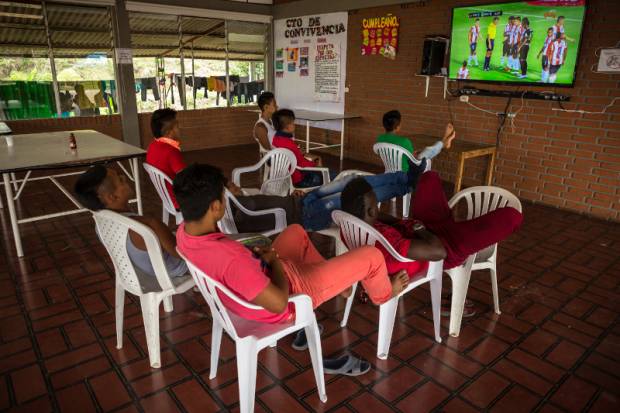
Teenagers in Caldas, Colombia, watch television on April 9, 2016, at a government rehabilitation center for former child soldiers who have left the rebels.
Ricardo’s story
Ricardo grew up in Bogotá where he lived with his mother, grandmother and sister. While his mother was sympathetic to the FARC, largely because of what she saw as a lack of interest and resources from the Colombian government, she didn’t want Ricardo to join at all, let alone at the age of 14. Despite her objections, he became involved with the FARC, taking part in boycotts and protests across Bogotá, learning to make explosives and recruiting other teenagers to join the cause.
He attended the Universidad Nacional and he studied community education for two years. At 20 years of age he left university and the capital to take up arms in the countryside. Because of his education, he was immediately placed in a number two spot beneath his commander.
At 23, his trust in the FARC came crumbling down. He and his unit were sent on foot through the forest to carry out a mission in a small town. At this point, after three years on the front lines of the conflict, he was used to these kinds of assignments. But when they approached the town, he and his 12-person unit found the Colombian military already present in strong numbers, placing Ricardo and his fellow soldiers in immediate danger.
Only after abandoning the mission did he discover that his commander had known the Colombian forces were there. Ricardo felt betrayed, disillusioned and angry. Within three months, he had planned his escape.
Ahead of the celebrations of the 50th anniversary of the FARC, he convinced his commander to allow him to go ahead of his unit to carry out reconnaissance work. He travelled by motorbike to a town, at which point he began looking for a car to get out on his own. It had been a year and a half since he had even seen a car, but he managed to steal one and fled, fearing for his life.
He reached Bogotá and was almost immediately captured by the Colombian military. But because he had voluntarily defected, he was able go through the ACR’s reintegration programme.
“Most of the children I trained are probably dead,” Ricardo says, looking away.
With their futures more uncertain than ever, Lorena and Ricardo are still hopeful. Ricardo has returned to school to become a teacher, and hopes to help children avoid violence and war.
Lorena is studying accounting and wants to move to Canada one day. She explains that after she escaped the FARC, a man showed her a picture of the country in winter, covered in snow. She hadn’t seen snow before.
“It was ice falling from the sky,” Lorena says. She wants to see that.
Child soldiers
These stories are not uncommon, and reflect the very nature of war and conflict. Soldiers on both sides are put in danger by their commanders, families are torn apart and innocent people are caught up in the crossfire.
Back in February, the FARC stopped recruiting soldiers under the age of 18. Shortly before the plebiscite they began the process of handing over child soldiers. The young people are currently being looked after by UNICEF Colombia, with the aim of re-uniting them with their families. The FARC delegation in Havana committed to continuing the process of handing over child soldiers.
As the leaders of the ‘No’ campaign demand a peace with justice, Mitrotti makes a more practical argument: reintegration is simply more efficient, cheaper and more successful than sending offenders to jail. The ACR claims that, once they have gone through reintegration, 76% of participants refrain from returning to illegal activities. Meanwhile, Mitrotti says imprisonment has the inverse effect – a 70% failure rate.
Mitrotti concludes, “It’s the duty of the Colombian public to work on giving a new human face to the people of the FARC.”
By Anne Bouleanu

